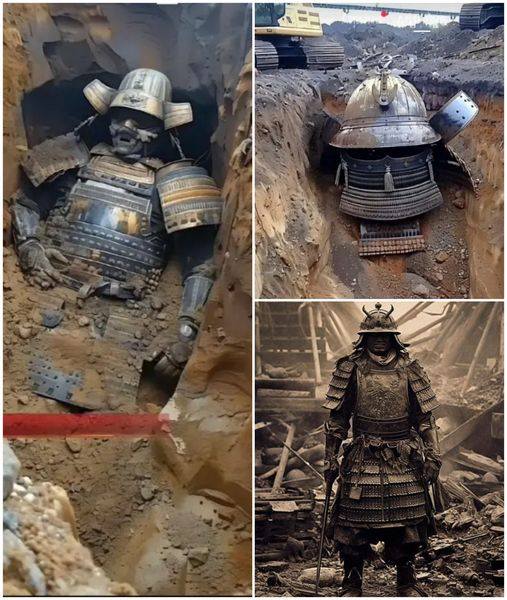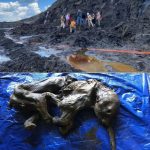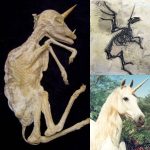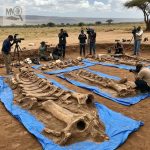The Giant Samurai Unearthed: Legend Reborn from Japan’s Sacred Earth

High in the mist-veiled mountains of Japan, a discovery has stunned archaeologists and reignited ancient legends — the unearthed remains of a colossal warrior believed to date back more than a thousand years. Dubbed the “Giant Samurai,” this awe-inspiring figure defies conventional history and bridges the gap between myth and reality. The find, consisting of towering skeletal remains clad in intricate armor and accompanied by weapons of exceptional craftsmanship, invites a profound question: was this a man, a myth, or something greater?
A Discovery Shrouded in Mystery

The excavation site, located near a centuries-old Shinto shrine, revealed the burial chamber of what appears to be a samurai of extraordinary stature — standing well over two meters tall, far beyond the average height of warriors during Japan’s feudal era. The armor, decorated with gold inlays and divine emblems, exhibits craftsmanship previously unseen in archaeological records. Alongside the remains, archaeologists found blades forged with near-modern precision and ornamental relics bearing inscriptions invoking the protection of ancestral spirits.
Carbon dating suggests the burial dates back roughly a millennium, corresponding to Japan’s Heian period — an age when myth and history intertwined in tales of divine warriors, mountain spirits, and heavenly guardians. The site’s location, deep within sacred terrain long associated with kami (deities or spirits), adds further intrigue to the find.
The Legend of the Giant Samurai
Ancient Japanese folklore speaks of Oni-bito — giant warrior spirits said to descend from gods or celestial beings, serving as protectors of shrines and emblems of divine strength. These legends have long been regarded as symbolic tales rather than historical accounts. Yet the discovery of a massive armored skeleton bearing hallmarks of both ritual and military significance forces a reconsideration of such myths.

Was this “Giant Samurai” a revered champion of his time, a genetically unique individual, or the inspiration behind generations of mythmaking? Some researchers speculate that the burial reflects ritual practices honoring deified warriors, while others argue it may represent an elite lineage whose physical and symbolic power transcended ordinary humanity.
Science Meets Legend
Researchers are employing cutting-edge forensic techniques — including DNA analysis, isotopic testing, and 3D reconstruction — to unravel the mystery. The results could reveal not only the samurai’s origins and physical traits but also his social status and diet, shedding light on how such an imposing figure could exist in ancient Japan. The weapons and armor, meanwhile, are undergoing metallurgical analysis to determine their composition and forging methods, potentially rewriting what is known about early Japanese metallurgy.
Conclusion
The discovery of the “Giant Samurai” stands at the crossroads of archaeology and mythology. Whether the remains belong to an extraordinary warrior or a symbolic figure elevated to divine legend, the find challenges our understanding of Japan’s past and its enduring spiritual traditions. As scientists continue to study this towering relic of history, one truth emerges: Japan’s legends were never mere stories—they were echoes of a time when faith, honor, and mystery walked hand in hand beneath the shadow of sacred mountains.











